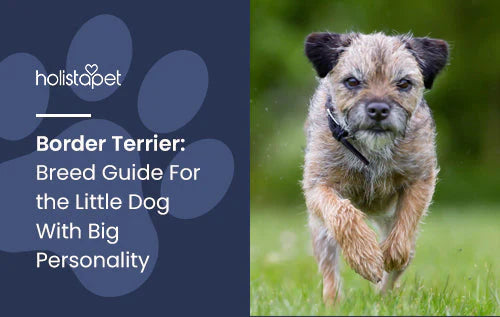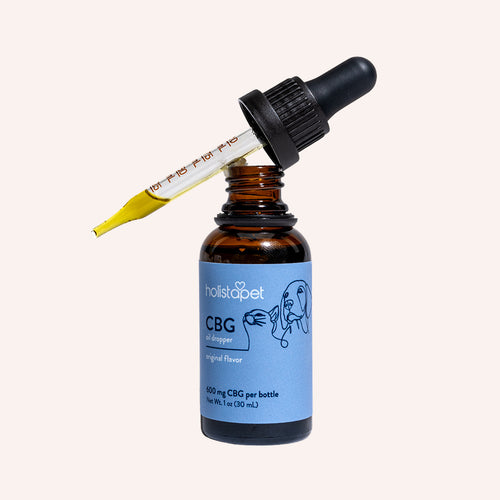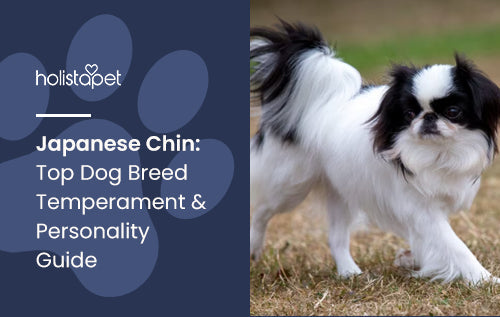The agile and upbeat Border Terrier has many admirers that cherish the breed's reputation as a tough and hard-working hound. These spirited, affectionate, and happy dogs are popular pets whether you look toward the city or the country! Borders are said to be 'hard as nails' when working, while retaining their good-tempered and affectionate dispositions at home.
The Border loves nothing more than exploring the great outdoors and making childhood playmates of other local puppies. Breeders originally designed these terriers to be country dogs, but they have adapted well to city living. They just need plenty of exercise and playtime. While Borders typically get along with other dogs, their hunting instincts are often aroused when squirrels or cats cross their path. Continue reading below for more information about this wonderful dog breed!
Border Terrier Physical Characteristics
Border Terriers have unique physical features, including a peculiarly otter-shaped head, resulting from a broad skull, and a short, dark-colored muzzle. They have coarse, short hair that most often comes in shades of red, blue, tan, wheaten, or grizzle and tan. The Border also has small, keen eyes that hide a mischievous expression.
Their ears are folded and shaped like the letter "V", and their little black noses often match their ears in color. Sporting only a few short whiskers on the muzzle, the Border Terrier also possesses unnervingly strong teeth and a devastating bite. Their tails are thick at the base and relatively short compared to other dogs of the same size.

Border Terrier Size
Big terrier breeds were built to be small enough to squeeze into tight spaces, but large enough to easily keep up with horse-riding hunters. Males can weigh anywhere from 13 to 15.5 pounds, while the breed's females typically weigh somewhere between 11.5 and 14 pounds. These small dog breed terriers typically stand 10 to 11 inches tall.
Borders have a sturdy medium build with fairly narrow shoulders and bodies. They are active, medium-boned terriers that are strongly put together, suggesting endurance and agility.
Border Terrier Personality
Borders are decently well-tempered, obedient, affectionate, and easily trained, considering that they're terriers. Their high intelligence allows them to quickly learn the various cues that may signal when it's mealtime, what specific items that you may or may not want them to chew, or when you're going to the office or outside for a walk.
While this is a generally loving and affectionate breed, that same affection doesn't often extend to other small animals. When it comes to running down prey, these fox-hunting hounds are relentless and seemingly incapable of fear, even if you don't keep them as hunting dogs. They will chase, attack, and even kill squirrels, neighborhood cats, or other small animals (though this can be stopped with behavior training).
What is border terrier temperament? To lessen the damage caused by their tendency to chase, make sure your yard is securely fenced, and don't let your Border off their leash in an unfenced area. Like every dog, Border Terriers need (and will likely thrive from) early socialization when they're young. Exposure to many different people, sights, sounds, and experiences can help ensure that your Border Terrier pup grows up to be a well-rounded adult dog.

Border Terrier Dog Breed Exercise
Terriers are fantastic diggers, so any backyard fencing meant to keep them in should extend at least 18 inches underground. Rather than fighting their digging instinct (which won't end well for you), perhaps give your pup a specific place of his own to dig. Even better, consider putting his drive to dig to work with various fun games! Border Terriers also enjoy canine sports such as flyball and participate in activities like lure coursing, earth dog, and tracking.
Your Border will enjoy at least a half-hour of exercise daily. This can include a good game of fetch, off-leash play in a fenced area, or a simple walk on a leash. Border Terriers are prone to boredom and weight gain without proper exercise. If you've owned a dog before, you know all too well that boredom can lead to lots of barking and even destructive behavior.
Border Terrier Training
When training a Border Terrier, you'll need to use a gentle touch; they are quite sensitive and respond very poorly to negative training techniques. Harsh training will quickly break their spirit. To properly train your Border Terrier, you'll want to look for a trainer with a deep understanding of the terrier mentality.
Positive reinforcement techniques such as food and dog treat rewards, play, and praise go a long way when training this gentle but hard-working breed. While the Border quickly learns house rules and other important forms of dog etiquette (such as greeting people politely, walking on a leash, and house training), they may never give up the habit of jumping up to greet people.
House Training
Border Terriers are relatively easy to house train, as long as they're given plenty of opportunities to go to the bathroom outside and a regular schedule. Border Terriers, like many dog breeds, love to chew on things. We suggest providing them with plenty of appropriate chew toys, as this is the best way to avoid unnecessary vet bills and expensive furniture replacements.
Crate training can help keep your Border Terrier from chewing up your entire house while you're out and about. Dog parents of every breed must understand that a crate is a tool, not a jail. Your pup loves you, and the best place for them to be is by your side! Avoid keeping your Border locked up in their crate for long periods.
Leash training is also a must. The speed with which a Border Terrier can run off searching for prey or adventure is just as amazing as it is terrifying. This drive to chase things does not fade with age. In fact, many Border Terrier parents report that it becomes stronger.

Border Terrier Dog Breed History
The Border Terrier has its origins in the northeast corner of England during the 18th century, near Scotland's Border. This breed is a product of an eternal feud that will likely never end: the battle between foxes and farmers. Breeders wanted the Border Terrier to have flexible, narrow bodies and legs long enough to follow horses during a fox-hunt. These proportions made it easy for the dog to squeeze through narrow holes, flushing foxes out of their hiding places.
This breed faced no shortage of stamina and sported thick, loose skin that wasn't easily pierced by the teeth of their foxy arch-enemies, as well as a weather-resistant coat. While the Border Terrier was prized by people in Scotland for its relentless determination and fearless nature, the Border Terrier was little known beyond the UK. Spectators would have certainly seen the Border in Northumberland's various agricultural shows in the late 19th century.
Still, dog fanciers generally took little notice of this handsome little breed until early on in the 20th century. England's Kennel Club recognized the Border Terrier in 1920, and a breed club was formed. And in 1930, an impressive hound by the name of Netherbyers Ricky became the first US registered Border Terrier in the world.
Common Health Problems Found in Border Terriers
The Border Terrier is a generally healthy breed, but they can be susceptible to certain health conditions like all breeds. Responsible breeders will take care to screen their breeding stock for health conditions such as allergies, juvenile cataracts, heart problems, and hip dysplasia. Certain Borders can be less tolerant of hot weather, so try to keep outdoor exercise to a minimum when it exceeds 85 degrees Fahrenheit outside.
If you're buying a puppy, one of the most important steps in the process is finding a good breeder who will be able and willing to show you health clearances for both of the puppy's parents. Health clearances are the documents that serve as proof that a dog has been tested for and cleared of a particular affliction.
When it comes to Border Terriers, you should expect to see health clearances from the Canine Eye Registry Foundation (CERF) and the Orthopedic Foundation for Animals for hips certifying that their eyes and hips are healthy normal. Because some health problems don't begin to show up until the affected dog reaches full maturity, health clearances often aren't issued to dogs two years old or younger. We suggest looking for a breeder that waits until their dogs are two or three years old before breeding them.
Note: Border Terriers have an unusually high pain tolerance. The only sign of sickness that they may show may be a behavioral change, such as the dog becoming quiet or withdrawn.

How to Care for a Border Terrier
Border Terriers are family dogs that prefer to live indoors with people instead of being tied up in the backyard. They enjoy having access to a yard, as any high-energy dog does. Just make sure that your fence is high and secure — at their full potential, the Border Terrier is a Houdini-level escape artist. Borders have been known to dig under and climb over fences and have very little street sense to keep them from running into the street or in front of cars once they get out.
Breeders developed this high-energy hunting breed to be independent. This is primarily because they had to work at a distance from their handlers during fox-hunts in the past. This instinctual trait is still strong in Borders, and although they may listen to and obey a command, they'll be the judge of exactly when to obey it.
Nutrition and Feeding for a Border Terrier
Regarding the Border Terrier's feeding, we recommend the following daily amount: 1 1/8 - 1 3/8 cups of high-quality dog food, split evenly into two meals. The amount that your dog eats depends on its activity level, metabolism, build, age, and size. Like people, dogs are individuals, and they don't all require the same amount of food. A highly active dog will likely need more food than a dog with couch potato-like tendencies.
The quality of dog food you buy will also make a significant difference — the better the dog food, the less of it you'll need to shake into their bowl, and the further it will go toward nourishing your sweet pup. You can keep your Border Terrier in good shape by feeding them measured food twice a day rather than leaving food out all day. If you're not sure whether or not your dog is overweight, give them either the hands-on test or the eye test, or potentially both!
How To Tell if Your Border Terrier is Overweight
What is border terrier weight? Border Terriers can very easily become overweight, so give them at least a half-hour of vigorous exercise each day and take care when measuring your Border's food. Simply measure out a full day's amount of food and place it in a storage container. When it's time to feed your pup, you can eyeball the portion of food to give them for each meal. If you feed two meals a day, then split the amount roughly in half.
You can easily check your dog's weight at home. First, look down at your dog from directly above; you should be able to see their waist with relative ease. If you're still unsure whether or not your pup is overweight, place your hands on their back, thumbs along the spine, with fingers spread downward. Without having to press hard, you should be able to feel (but not see) their ribs. If you can't feel their ribs when you do the hands-on test, your pup may need more exercise and less food.

Coat Color And Grooming
Do border terriers shed? The Border Terrier sports a dense, short undercoat that lays beneath a wiry topcoat. As mentioned above, they have loose and thick skin — a trait that protected them from bites during their fox-hunting days. The Border Terrier coat comes in a handful of colors. They can be blue and tan, full red, wheaten (pale yellow or fawn), or grizzle and tan. Some Borders have a small patch of white fur on their chest. Regular stripping (every five to six months) and weekly brushing of your terrier's rough coat will keep your sweet pup looking tidy and well put together.
Your grooming kit should include:
- A fine comb
- A natural bristle brush
- A stripping knife (unless you've opted to have a professional groomer handle stripping the coat)
Stripping
Stripping is the kind of thing you can do while you and your Border are watching a television show, as it involves plucking dead hair by hand or removing it with a stripping knife or another stripping tool. You can use a clipper on the coat for easier care, but the color and texture may soften and become lighter, and the coat will lose its weather resistance.
The Border Terrier's coat needs periodic stripping and weekly brushing. Stripping is the process of removing their dead hair with a stripping tool by hand. If you know your Border's breeder, they can most likely show you how to strip the coat. With a stripped and maintained coat, you'll find less of your Border's hair decorating your flooring, furniture, and clothing.
More on Coat Care
A longer coat isn't damaging, as their coat naturally repels dirt. It should stay relatively clean with a wipe-down when necessary and weekly brushing. Because of their coat's natural resistance to dirt, Border Terriers do not need to take baths very often. These pups only require bathing under the most dire of circumstances (like when they've gotten into something that you don't want on their fur).
When you bathe your sweet terrier pup, we recommend using a dog shampoo made for the terrier's rough coat to maintain its texture. If you don't mind a more shaggy aesthetic for your pup, you can leave the coat as is, with no stripping or clipping. If you take the natural route, we highly suggest always having a lint roller handy. Their coat is likely to shed more than it would if you trimmed it.

Teeth Care
You'll want to brush your Border terrier's teeth a few times a week to remove and prevent tartar build-up and bacteria. Though it is by no means necessary, we highly suggest brushing your Border's teeth daily. After all, nobody suffers from having clean teeth in the morning!
Nail & Paw Care
We suggest trimming their nails up to twice a month, as needed. Your Border's nails are too long when you can hear them clicking on the floor when they walk. There are lots of upsides to shorter nails when it comes to the Border Terrier, such as:
- Short nails keep the feet in good condition
- Paws don't get caught in the carpet and tear
- Your legs won't get scratched when your Border Terrier jumps up to greet you with excitement
Puppy parents should start grooming their Border pup early to get them used to the process. Dogs are often sensitive about their feet, so handle your pup's paws frequently to get them used to your touch. Grooming can be easier if you make it a positive, reward-filled experience for your dog. This is how you'll lay the groundwork for easy-breezy veterinary exams when your pup is an adult.
Children And Other Pets
Border Terriers are a perfect animal companion for kids, as they can effortlessly match a child's energy all day long. However, they may be a little too rambunctious for households with children under the age of six. Just take care to supervise them, especially around the young ones, as they can unintentionally hurt small children. Children must be taught how to touch and approach your Border Terrier, as with any animal.
Supervision is recommended for interactions between dogs and young children to prevent any biting or ear pulling from either party. Border Terriers generally get along well with other pet animals when they are socialized as puppies. These Terriers tend to thrive with dogs of the opposite sex. Borders are likely to appease their original instincts to chase outdoor cats, squirrels, and other small wildlife. And if you care for the safety of any smaller prey-type animals (such as birds, rabbits, hamsters, and gerbils), do not trust your Border to be alone with them.
Border Terrier Dog Rescue Groups
Sad as it is, people sometimes adopt Border Terriers without a clear understanding of what goes into owning one. The result is that this sweet and loving breed often ends up in need of fostering or adoption and in the care of rescue groups. There are several Border rescue groups online that can help with finding homes, fostering, and other rescue-related issues for dogs in need of assistance.
If raising and training a puppy doesn't interest you, an adult Border Terrier may be a great choice. Adults can be much easier because they may have already gone through training and the destructive puppy stage. If you're interested in adopting an adult Border Terrier, a dog rescue is a perfect place to look.
To ensure that you're getting a healthy dog, never buy a puppy from puppy mills. Also, never trust any pet store or breeder who can't or won't provide the dog's health clearances.

More About the Border Terrier
Border Terriers thrive when they're with people. They aren't happy living outdoors with little human interaction. If left to their own devices, they can get bored and become noisy or destructive. These pups are expert escape artists and will likely find their way out of any fenced yard if given enough time and opportunity. Find yourself a bouncy, lovable, and fearless Border Terrier, and you'll never look back!


 CBD Oil for Dogs - Fast Acting
CBD Oil for Dogs - Fast Acting
 Chicken Flavored CBD Oil For Dogs - Easy Dose
Chicken Flavored CBD Oil For Dogs - Easy Dose
 Salmon Flavored CBD Oil For Dogs - Highly Rated
Salmon Flavored CBD Oil For Dogs - Highly Rated
 CBG Oil for Dogs and Cats - Loved by Thousands
CBG Oil for Dogs and Cats - Loved by Thousands





Leave a comment
All comments are moderated before being published.
This site is protected by hCaptcha and the hCaptcha Privacy Policy and Terms of Service apply.